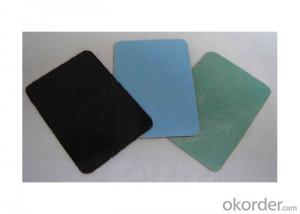MDF Board: A Modern Alternative to Plywood
MDF stands for Medium Density Fiberboard, and it’s a versatile, affordable, and modern alternative to traditional plywood. It’s made from wood fibers and resin, which are combined under heat and pressure to create a smooth, consistent surface. This material has gained popularity in recent years due to its many advantages over plywood. Let’s dive into the world of MDF and explore why it’s becoming the go-to choice for many homeowners and professionals alike.
The Appeal of MDF
One of the first things you’ll notice about MDF is its smooth surface. It’s perfect for painting and staining, making it an excellent choice for furniture and cabinetry. The uniform texture means you won’t have to deal with the knots and grooves that are often found in plywood. This not only saves time during the finishing process but also results in a more professional-looking final product.
Durability and Strength
MDF is known for its durability and strength. It’s resistant to warping and shrinking, which can be a common issue with plywood, especially in areas with high humidity or temperature fluctuations. This makes MDF a great option for areas like bathrooms and kitchens, where moisture and heat can take a toll on other materials.
Easy to Work With
Working with MDF is a breeze. It’s easy to cut, shape, and sand, thanks to its uniform density. This makes it an ideal material for DIY projects and professional use. Whether you’re a seasoned woodworker or just starting out, you’ll appreciate the ease of use that MDF offers.
Cost-Effective Solution
Let’s talk money. MDF is generally cheaper than plywood, making it an attractive option for those on a budget. The cost savings can be significant, especially for larger projects. Plus, the ease of use and reduced finishing time can also contribute to overall cost savings.
Environmental Considerations
MDF is often made from sustainable wood sources and can be manufactured with a lower environmental impact compared to plywood. Some manufacturers use recycled wood fibers, which is a bonus for those looking to make eco-friendly choices.
Design Flexibility
The design flexibility of MDF is another reason it’s becoming popular. It can be used for a wide range of applications, from furniture making to wall paneling, and even for creating decorative moldings and trim. The possibilities are endless, and it’s easy to customize MDF to fit your specific design needs.
Disadvantages to Consider
While MDF has many advantages, it’s not without its drawbacks. It’s not as water-resistant as plywood, which can be a concern in certain applications. However, with proper sealing and finishing techniques, this issue can be mitigated. Additionally, MDF is heavier than plywood, which might be a consideration when it comes to transportation and handling.
Choosing the Right MDF for Your Project
When selecting MDF for your project, consider the specific requirements of your design. Look for MDF that meets the necessary quality standards and has been tested for durability and strength. It’s also important to choose the right thickness and density for your needs.
Finishing Techniques for MDF
To get the most out of your MDF project, it’s essential to use the right finishing techniques. Painting, staining, and even veneering can all work well with MDF. Just be sure to properly prepare the surface and follow the manufacturer’s recommendations for the best results.
MDF in the Real World
Let’s look at some real-world examples of MDF in action. From sleek, modern furniture designs to traditional cabinetry, MDF can be seen in a variety of applications. It’s a testament to its versatility and the growing preference for this material over plywood.
The Future of MDF
As more people discover the benefits of MDF, it’s likely that we’ll see an increase in its use across various industries. From construction to furniture design, MDF is proving to be a reliable and cost-effective option.
Conclusion
In conclusion, MDF is a fantastic alternative to plywood for a multitude of reasons. Its smooth surface, durability, ease of use, cost-effectiveness, and design flexibility make it an attractive choice for both homeowners and professionals. While there are some disadvantages to consider, the benefits often outweigh them. If you’re considering a project that could benefit from the use of MDF, don’t hesitate to give it a try. You might just find that it’s the perfect material for your needs.

